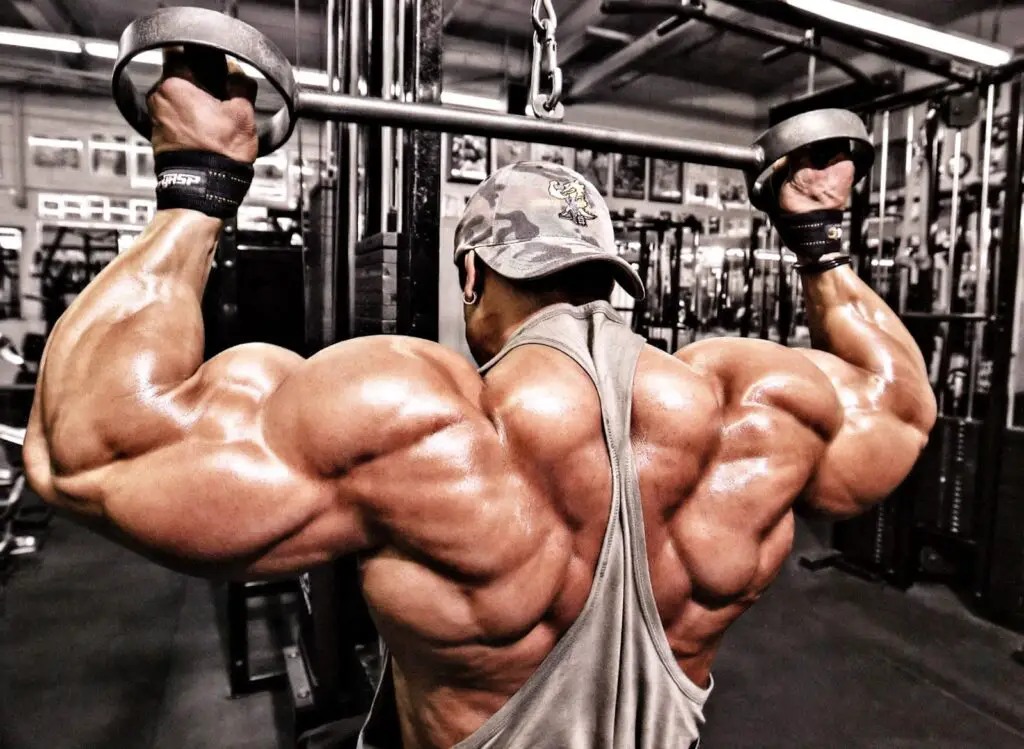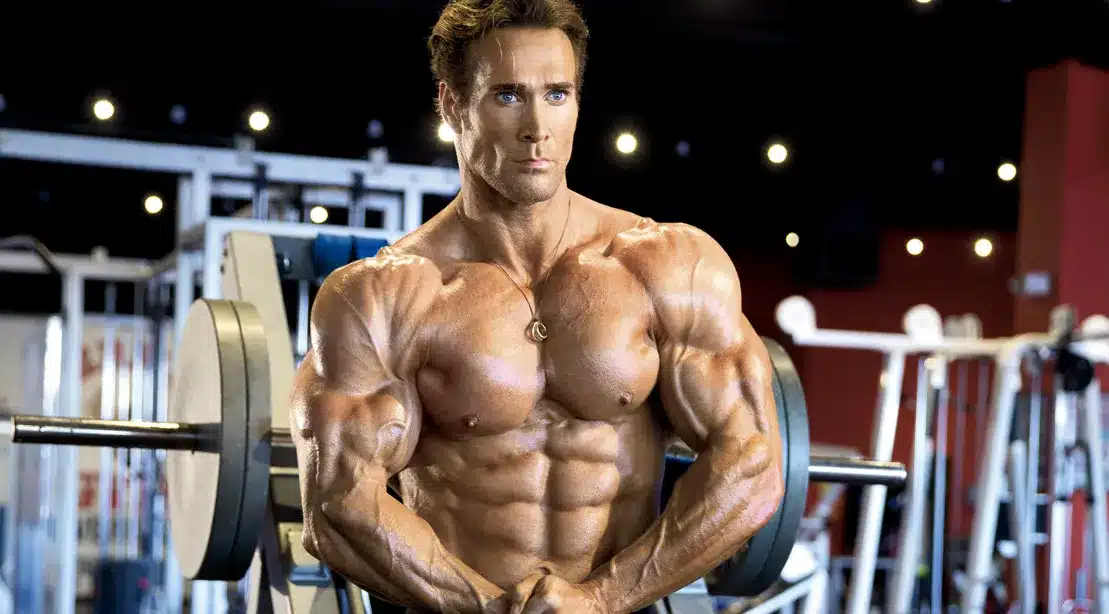Introduction
What Is 212 Bodybuilding: 212 Bodybuilding refers to a specific category within the realm of professional bodybuilding competitions. It is a segment characterized by specific criteria and restrictions that differentiate it from the traditional Open Bodybuilding category. The “212′ ‘ in the name signifies the maximum body weight limit for competitors, which is 212 pounds (96.16 kilograms) or below on stage. In 212 Bodybuilding, athletes are challenged to sculpt and showcase a symmetrical, proportionate, and highly defined physique while adhering to the weight limit. This category places a strong emphasis on aesthetics, muscularity, and conditioning, requiring participants to present a lean and chiseled appearance.
The 212 Bodybuilding division has gained popularity due to its competitive nature and the unique challenges it presents to bodybuilders. Athletes in this category must strike a fine balance between muscle mass and body fat percentage to maximize their potential on stage. In this exploration of 212 Bodybuilding, we will delve into the specific criteria, training, and diet strategies, as well as the athletes who have excelled in this division, shedding light on the dedication and discipline required to compete at the highest level in this distinctive category.
The 212 Bodybuilding division has its roots in the evolution of professional bodybuilding competitions. As bodybuilding fans and athletes sought more diversity and fairness in the sport, the introduction of weight class-based divisions like the 212 category provided a platform for competitors of varying body sizes to showcase their skills on a level playing field .Athletes who compete in the 212 Bodybuilding category are known for their exceptional dedication to diet, training, and conditioning. They must meticulously sculpt their physiques to meet the strict weight limit while maximizing muscle size and definition. This requires a deep understanding of nutrition, supplementation, and training techniques.

Why is it called 212 bodybuilding?
The requirements for this class, just as the name implies, is that the athlete needs to weigh up to and under 212 Lb (i.e96.6 kg) and they must be less than 166 cm or 5 ‘5 of height. These bodybuilders must put on tiny underwear, and they have to accomplish the seven basic bodybuilding postures. The term “212 bodybuilding” refers to a specific category or class in bodybuilding competitions. It is named after the weight limit for athletes who compete in this class.
Weight Limit: Athletes must weigh up to and under 212 pounds (approximately 96.6 kilograms) when they compete. This weight restriction is a defining characteristic of the class.
Height Restriction: Competitors must also be less than 166 centimeters (or 5 feet 5 inches) in height. This height limitation adds an additional dimension to the class, ensuring that competitors are not only within a specific weight range but also have a certain stature.
Posing: Like other bodybuilding categories, athletes in the 212 class are required to perform a set of mandatory bodybuilding poses. These poses are standard across bodybuilding competitions and are used to showcase the athletes’ muscular development, symmetry, and conditioning.
What is 212 Bodybuilding?
212 Bodybuilding is a category within professional bodybuilding competitions where competitors must weigh 212 pounds (or less) on stage.212 Bodybuilding is a specific category within the realm of professional bodybuilding competitions. In this category, competitors are required to weigh 212 pounds or less when they step onto the stage. The 212-pound weight limit distinguishes this class from other bodybuilding divisions, emphasizing a particular range for competitors.
In addition to the weight requirement, athletes in the 212 Bodybuilding category are judged based on various criteria such as muscular development, symmetry, conditioning, and posing. They perform a set of mandatory bodybuilding poses to showcase their physique’s aesthetics and proportions.
How does 212 Bodybuilding differ from Open Bodybuilding?
Unlike Open Bodybuilding, 212 Bodybuilding imposes a strict weight limit, creating a level playing field for competitors with a maximum weight of 212 pounds.212 Bodybuilding and Open Bodybuilding are two distinct categories within professional bodybuilding competitions, and they differ primarily in terms of weight limits and eligibility criteria.
Weight Limit:
- 212 Bodybuilding: This category enforces a strict weight limit, where competitors must weigh 212 pounds (or less) on stage. This weight limit is a defining feature of the 212 class.
- Open Bodybuilding: In contrast, Open Bodybuilding does not have a specific weight limit. Competitors in the Open category can vary significantly in terms of size and weight, with some athletes exceeding 212 pounds and others being considerably lighter.
Eligibility:
- 212 Bodybuilding: Athletes competing in the 212 category are typically those who fall within the specified weight range and meet the height requirements. This category often attracts bodybuilders who may not have the mass or size to compete in the Open class but excel in conditioning and aesthetics.
- Open Bodybuilding: The Open category is open to all bodybuilders regardless of their weight or size. It is often characterized by athletes with substantial muscle mass and size, and there are no specific restrictions based on weight or height.
Competitive Focus:
- 212 Bodybuilding: Competitors in the 212 category tend to focus on achieving maximum muscle definition, symmetry, and conditioning within the weight limit. It emphasizes aesthetics and proportionality.
- Open Bodybuilding: Open Bodybuilding places a strong emphasis on overall muscle mass, size, and sheer physicality. Athletes in this category often aim to attain a larger and more massive physique.
What are the key criteria for success in the 212 Bodybuilding division?
Success in the 212 division requires a combination of aesthetics, muscularity, and conditioning. Competitors must showcase a lean and proportionate physique.Success in the 212 Bodybuilding division is determined by several key criteria that collectively evaluate the competitor’s physique.
Muscularity: Competitors must possess well-developed muscles throughout their entire body. This includes a balanced and proportional development of muscle groups, with an emphasis on symmetry and muscle size. Muscularity is a fundamental aspect of success in bodybuilding.
Conditioning: Achieving a high level of conditioning is crucial in the 212 division. This means having low body fat levels, well-defined muscle separation, and visible vascularity. Competitors should aim for a shredded and ripped appearance to showcase muscle detail.
Aesthetics: Aesthetic appeal plays a significant role in this division. Judges evaluate the overall aesthetics of the physique, including the flow of muscle lines, the balance of proportions, and the athlete’s posing ability. A harmonious and visually pleasing physique is highly regarded.
Symmetry: Symmetry is essential in bodybuilding, and it’s particularly emphasized in the 212 division. Competitors should display even development of muscles on both sides of their body, with no significant imbalances. Symmetry contributes to an aesthetically pleasing and balanced physique.
Proportions: Proper proportions between muscle groups are critical. This includes the size and shape of muscles such as the chest, shoulders, arms, back, and legs. Balanced proportions create a visually appealing physique that flows seamlessly from one muscle group to another.
Who are some notable 212 Bodybuilding champions?
Notable champions include Flex Lewis, James “Flex” Lewis, and Kamal Elgargni, who have excelled in this category. Indeed, the 212 Bodybuilding division has seen several notable champions who have made a significant impact in the world of bodybuilding.
Here are a few notable 212 Bodybuilding champions:
Flex Lewis (James “Flex” Lewis): Flex Lewis is one of the most iconic names in the 212 Bodybuilding division. He won the prestigious Mr. Olympia 212 Showdown title multiple times during his career, establishing himself as a dominant force in the division. Flex Lewis is celebrated for his impressive physique, remarkable conditioning, and exceptional posing skills.
Kamal Elgargni: Kamal Elgargni is another accomplished bodybuilder who has achieved success in the 212 division. He won the 212 Mr. Olympia title, showcasing his exceptional muscle development, symmetry, and aesthetics. Kamal’s dedication and consistency in his training have earned him recognition among the elite in the division.
How do athletes prepare for 212 Bodybuilding competitions?
Athletes must meticulously manage their diet, training, and conditioning to meet the weight limit while maximizing muscle mass and definition.Preparing for 212 Bodybuilding competitions is a rigorous and disciplined process that involves meticulous attention to various aspects of training, diet, and conditioning.
Here’s an overview of how athletes prepare for these competitions:
Setting Clear Goals: Athletes start by setting specific goals for their physique, including the target weight they need to achieve to meet the 212-pound limit. They also define their desired level of muscle mass, conditioning, and symmetry.
Customized Training: Athletes work with coaches and trainers to develop a customized training plan. This plan typically includes resistance training, strength training, and cardiovascular workouts. The focus is on building muscle while maintaining or reducing body fat.
Nutrition Planning: Nutrition is a critical component of preparation. Athletes follow strict dietary plans that are designed to meet their calorie and macronutrient requirements. Diet plans are often divided into bulking and cutting phases, with the cutting phase aimed at achieving the desired level of leanness and conditioning.
Caloric Manipulation: Athletes carefully manage their caloric intake to reach their weight goals. During the cutting phase, they create a calorie deficit to shed excess body fat while preserving muscle mass.
Macronutrient Balance: Protein intake is crucial for muscle growth and repair, so athletes prioritize high-quality protein sources. They also balance their carbohydrate and fat intake to fuel workouts and support overall health.
What is the significance of the 212 Bodybuilding division in the bodybuilding community?
The 212 division has brought diversity and competitiveness to professional bodybuilding, attracting athletes who excel within a specific weight range.The 212 Bodybuilding division holds significant importance within the bodybuilding community for several reasons.
Diversity of Competitors: The 212 division has added diversity to professional bodybuilding by creating a category where athletes must adhere to a strict weight limit of 212 pounds or less. This weight limit allows competitors who may not have the mass and size to compete in the Open Bodybuilding class to participate and excel.
Level Playing Field: The weight limit in the 212 division creates a level playing field, as all athletes must meet this requirement. This ensures fair competition and gives bodybuilders of varying body types an opportunity to showcase their physique.
Showcasing Aesthetics: The 212 division places a strong emphasis on aesthetics, symmetry, and conditioning. It highlights the artistic and aesthetic aspect of bodybuilding, which resonates with fans and enthusiasts who appreciate finely sculpted physiques.
Encouraging Balanced Physiques: Competitors in the 212 division often strive for balanced and proportionate physiques. This focus on symmetry and proportion encourages athletes to develop well-rounded and harmonious muscle groups.
Competitive Excellence: The division has produced some remarkable champions who have achieved excellence in bodybuilding while adhering to the weight limit. These athletes have demonstrated that a combination of muscle mass, aesthetics, and conditioning can lead to success.
How has the 212 Bodybuilding division evolved over time?
The division has grown in popularity, offering a platform for bodybuilders to display their skills while adhering to weight restrictions, shaping the future of the sport.The evolution of the 212 Bodybuilding division over time has been marked by several key developments that have contributed to its popularity and significance in the world of bodybuilding.
Inception: The 212 division was introduced as a response to the growing demand for a category that allowed bodybuilders to compete within a specific weight limit. It was established to create a level playing field for athletes of varying sizes and to emphasize aesthetics and conditioning.
Increased Competitiveness: Over the years, the division has become increasingly competitive, attracting top-level athletes who excel within the 212-pound weight limit. As the quality of competitors has risen, it has elevated the prestige of the division.
Notable Champions: The 212 division has produced a roster of notable champions who have made their mark in the bodybuilding community. Athletes like Flex Lewis and Kamal Elgargni have become synonymous with excellence in this division.
Diversity of Physiques: The division has showcased a diverse range of physiques, from those with incredible symmetry and aesthetics to athletes with exceptional conditioning. This diversity has added depth and interest to the division.
Fan Engagement: The 212 division has garnered a dedicated fan base that appreciates the artistic and aesthetic aspects of bodybuilding. Fans enjoy watching athletes in this category display their finely sculpted physiques on stage.

Conclusion
212 Bodybuilding is a distinctive and impactful category within the world of professional bodybuilding. Named after its strict weight limit of 212 pounds (or less), this division has brought diversity, competitiveness, and a unique aesthetic focus to the bodybuilding community. Over time, it has evolved into a highly regarded and popular category, drawing in athletes who excel within the confines of its weight restrictions.
The 212 division has not only provided a level playing field for bodybuilders of varying sizes but has also emphasized the importance of aesthetics, symmetry, and conditioning in the sport. It has showcased the artistry of bodybuilding, captivating fans and enthusiasts with finely sculpted physiques and posing mastery.
Notable champions like Flex Lewis and Kamal Elgargni have left an indelible mark in this division, inspiring both aspiring bodybuilders and dedicated fans. The division’s impact on the sport is evident in its continued growth, increased competitiveness, and its role in shaping the future of professional bodybuilding.

